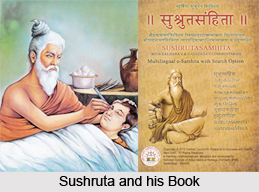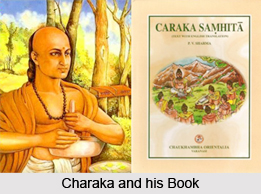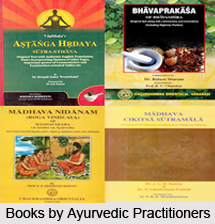 Ayurvedic practitioners in India promoted Ayurveda or the "Science of Life" since ages. Ayurveda in India is a system of traditional medicine that took birth in India and eventually got famous in other parts of the world as a form of alternative medicine.
Ayurvedic practitioners in India promoted Ayurveda or the "Science of Life" since ages. Ayurveda in India is a system of traditional medicine that took birth in India and eventually got famous in other parts of the world as a form of alternative medicine.
The earliest literature of Ayurveda in India appeared during the Vedic period by the earliest ayurvedic practitioner in India - Sushruta. The Sushruta Samhita and the Charaka Samhita were influential works on traditional medicine during this era. The Ayurvedic practitioners in India also acknowledged a number of medicinal preparations and surgical measures for curing various ailments and diseases.
Sushruta: Sushruta was an Indian surgeon and teacher of Ayurveda who lived in the holy city of Kashi by the 6th century BC. He authors the medical book "Sushruta Samhita", found in Vedic Sanskrit. The Sushruta Samhita contains multiple detailed references to diseases and medical procedures. It is the complete book that deals with the practical problems of surgery and midwifery or obstetrics. Sushruta was the first person who studied human anatomy and his book is the detailed study of anatomy. Sushruta was the specialist of Rhinoplasty or plastic surgery and ophthalmology or the removal of cataracts.
 Charaka: Charaka is also an Indian Ayurvedic practitioner, born in c. 300 BC as a Maga Brahmin. He was one of the chief contributors to the ancient art and science of Ayurveda. Charaka"s translations said that health and disease are not determined and life may be extended by human effort and attention to lifestyle. The "Charaka Samhita" is the Ayurvedic text obtained from the ancient Indian tradition written by the great Ayurvedic physician Charaka which is said to be the oldest of the 3 ancient treaties of Ayurveda and has the relevance in the modern day practice of Ayurvedic medicine.
Charaka: Charaka is also an Indian Ayurvedic practitioner, born in c. 300 BC as a Maga Brahmin. He was one of the chief contributors to the ancient art and science of Ayurveda. Charaka"s translations said that health and disease are not determined and life may be extended by human effort and attention to lifestyle. The "Charaka Samhita" is the Ayurvedic text obtained from the ancient Indian tradition written by the great Ayurvedic physician Charaka which is said to be the oldest of the 3 ancient treaties of Ayurveda and has the relevance in the modern day practice of Ayurvedic medicine.
However with the passing years, the development of Ayurveda in India was considerable and there are many Ayurvedic practitioners in India, spread all across the nation. The most eminent medical personalities of the middle ages in India are as follows:
Acharya Drdhabala: He is regarded as the best redactor of Charaka Samhita. The Charaka Samhita which was translated as "Charak" into Arabic language was the Drdhabala"s edition.
Acharya Bhagabhata: He re-edited Drdhabala"s edition of "Charaka Samhita" which he named as the "Astanga Ayurveda Samgraha". From his book it is known that he was born out of Singha Gupta in Sindh. He composed a book named "Astanga Hrdaya". The Astanga Ayurveda Samgraha is a book consisting of vivid descriptions on surgical techniques and psychological medicine.
Madhava Kar: He is taken to be the writer of the famous book, named, "Ayurveda Shastra Rogabinischaya", which is also known as "Madhava Nidanam". Madhava Kar was born in Bengal in 7th century AD. 
Chakrapani Dutta: He was also born in Bengal and was a famous Ayurvedacharya. His famous composition is known as "Chikitsa Samgraha". Chakrapani has composed two other books named "Drabyaguna" and "Sarbasar Samgraha". He also wrote some explanatory notes on Charaka Samhita and Sushruta Samhita which are known as "Charakatatta Pradipika" and "Bhanumati". Because of his scholarship he was given the honorary titles of "Charaka Chaturanama" and "Sushruta Sahasranama". His younger brother Bhanu Dutta was also an Ayurvedacharya.
Bhaba Mishra: Bhaba Mishra was from Kannauj and was a contemporary of Emperor Akbar. He was an orthodox Brahmin; where from he learnt medical science cannot be found in his book "Bhaba Prakasha".
Related Articles
Ayurveda
Origin of Ayurveda
History of Ayurveda
Sushruta
Sushruta Samhita
Charaka Samhita
Ayurveda Medication
Treatment in Ayurveda
Reformation of Ayurveda
Ancient Literature of Ayurveda




















